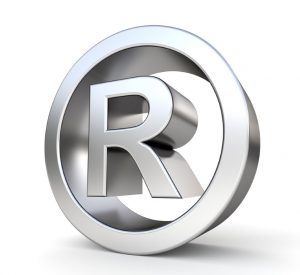 There are many sites and companies out there that will take your money and file a trademark on your behalf with the USPTO. They will walk you through the process which typically involves searching to see if anyone else has already trademarked your logo, documenting your artwork, and going through the government process which allows for a period of time where other logo owners can object. If no one does and your forms are in order, you finally get a US trademark.
There are many sites and companies out there that will take your money and file a trademark on your behalf with the USPTO. They will walk you through the process which typically involves searching to see if anyone else has already trademarked your logo, documenting your artwork, and going through the government process which allows for a period of time where other logo owners can object. If no one does and your forms are in order, you finally get a US trademark.
How much does it cost to trademark a logo?
Well, that’s the interesting part. It’s all over the place from $69 to $500. But we can tell you, having had several trademarks that it costs way more than that. In fact, filing the papers is the least expensive thing you will do to protect your mark. The trademark is just the beginning of the costs. It gives you permission to now throw some really big bucks at the so-called “protection.”
Here are some considerations that the legal service providers who sell you the filling services might not tell you:
1. Your US registered trademark does not really stop other companies from copying your logo or name.
It basically comes down to who has the biggest war chest and who can sustain the hugely expensive legal battle the longest. It doesn’t do you any good to be “right” if you go broke defending your mark. The big guys know that small startups are cash strapped and they may copy your mark with impunity.
If you sue, you may win in 3-5 years, for 3-5 hundred thousand dollars, not to mention suffering huge anxiety with major time and focus away from your sales. Oh, and the legal services company that sold you the filing service? They’ll be happy to defend you! That’s how they make their real money.
The trademark is viewed by the courts as “one” of the supporting documents in a dispute. Others may include who got to market first, how long they have been in the market, how close their mark is to yours and so on. There’s no criminal prosecution for trademark infringement. You have to bring a civil case. You are picking up the bill!
2. Your US Registered trademark does not necessarily protect you in foreign markets.
That’s right. Some countries will respect your US trademark but most will not. You have to get a trademark in every country in which you intend to do business. And, if you don’t, and you become popular in the US, and then try to sell in a foreign country, don’t be surprised if some opportunist in that country has already filed a similar trademark there.
Now you have to do business with the local trademark owner, or change your mark for that country. This is a form of extortion, not unlike domain sitting on the web. Oh, and even if you are fortunate enough to get the foreign mark first, you are still not protected from challengers and abusers.
Once again, they know you are limited in your financial ability to sustain an ongoing legal battle in a foreign country. An infringer’s legal team actually told us that even though we had a trademark in their country, we should forget about their infringement because we couldn’t afford to pursue them in court.
3. Your US Registered trademark is a requirement regardless of its inability to protect your logo and name.
So, if it’s so expensive to protect your logo and name, why bother? Well, first of all, it is one of the primary documents your eventual acquirer will demand before they pay for your company. Your acquirer will also want to see any subsequent legal challenges involving your mark including court documents and all correspondence. They will also want to see any and all foreign marks, challenges, contentions, and correspondence.
Secondly, as mentioned, it is one of the documents the court looks at in a squabble. So it is important that you have it. Equally important is being able to prove with invoices, delivery documents, and accounts receivable, that you actually sold your branded products with your mark affixed in interstate commerce before anyone else.
The fact that you were the first to invoice and receive payment on products bearing your mark is a powerful additional argument. It can be used to challenge subsequent filings of your logo by others who have yet to sell them in interstate commerce. When we wanted to protect a logo or a business name, we always sold it in interstate commerce first.
Conclusion:
We are not trademark attorneys. We used them and recommend them. The above advice is based on our real work experience building the Barefoot Wine brand. We were infringed upon on a regular basis. We had expensive legal battles. And we wondered why nobody had ever told us about the realities of protecting our business name and logo. So we are telling you now and we hope it helps!
Develop a positive cash flow as soon as possible and set aside a legal fund to protect your name. Get foreign trademarks if you are even considering selling in those countries before someone else sees your success and gets them first. Be the first to sell your trademarked products across state lines. And remember, all the marks you have are part and parcel to the brand value you convey to your acquirer.


